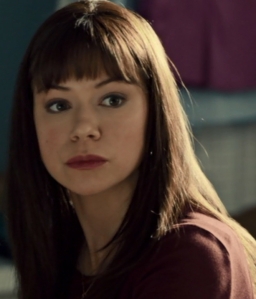
A group of business professionals with college degrees sat around a table in their office building today discussing the most critical topic of the week, far more important than any potential merger, major new account, or policy initiative: When to see the new Godzilla movie that opens this weekend.
Thank you, world, for finally catching up with me. It has been a lonely bunch of decades.
I am a man of many interests. Music. Writing. Art. Film. Architecture. Science. Multiculturalism. Civil Rights… Drums. Guitars. Rock. Soul. Jazz. Metal. Funk. Pop. Classical… Horror and science fiction. Star Wars. Star Trek. Doctor Who. Zombie movies. Italian Gialli. Friday the 13th. Tarantino. Kubrick. Cronenberg…
I remember where I was in my life when I discovered all these things, and I know how each interest has helped shape my identity.
On the other hand, there’s Godzilla. I don’t recall discovering Godzilla, simply because my memory has not retained anything prior to age three. I was already a veteran at that point.
My mom has photos of the toddler me sitting on the floor, staring in wonder at our grainy old Zenith TV while the world’s most famous monster stomped across the screen, kicking up a maelstrom of fire, debris, sparks, and wind as he obliterated yet another Japanese city. The TVs have gotten better, DVDs and blu-rays offer picture quality undreamed of in the days of Saturday-morning monster marathons, and a 180-million-dollar epic remake is about to shake theater speakers all across the world, but the star of the show hasn’t really changed, other than cosmetically. Godzilla is still the coolest, baddest, biggest character in all of cinema.
Yes, the budgets were low in those old flicks. Of course it was a guy in a rubber suit. No, I don’t believe Godzilla exists on the same artistic plane as Ingmar Bergman, Akira Kurosawa, or Martin Scorsese. But as much as I revere those artists, only Godzilla:
- Inspired a shy, scrawny little boy feel strong for the first time in his life
- Awakened that boy’s imagination and stimulated his drive to tell colorful, fantastical stories
- Impressed upon that boy what wonderful, unreal things were possible if he was open to them
- Put an appreciation, fascination, and respect for other cultures and ethnicities into his young, impressionable mind before forces around him had a chance to indoctrinate him to a life of judgment and intolerance
If you didn’t grow up watching this stuff, there’s little I can do to convince you Godzilla is great. I will only say that what’s ridiculous about those films is also what makes them so spectacular: The outlandish, implausible monsters and the manic plots. In one, a metallic bird monster with a buzz-saw chest and a bomb-spitting giant cockroach from an undersea kingdom team up to fight a robot that can change size at will and a 30-storey Tyrannosaurus who shoots blue fire from his mouth.
Show that to a three-year-old child and see if he lacks for imagination when he grows up. I may not recall my first experience with Godzilla, but I remember my son’s, and I will admit to more than a little satisfaction when he became mesmerized in an instant. Years later, he speaks with reverence of the different films and monsters, and I’d be remiss if I didn’t mention he is a rather imaginative writer himself.
I’ll also invalidate the frequent criticism that the films are “cheesy” because of the obvious special effects fakery. Realism and naturalism in art is a western convention. East Asian art has never aspired to look “realistic,” so comparisons are irrelevant. But I’ll make one anyway: watch any of the contemporaneous monster movies filmed in the west. With rare exception, the creatures and sets are rather shoddy compared to those constructed by their Japanese counterparts.
Oh, and making fun of the dubbing is misdirected superiority. The bad lip-syncing is the fault of the American distributor, not the filmmakers.
End of mini-lecture.
I have no idea if this American remake is going to be any good, though it is getting excellent reviews and appears to pay great respect and homage to the source material. I guess I’ll find out Saturday morning, when I invite the whole world into my house for two hours.
***
A gallery of big G through the decades

The 1950s, as a metaphor for the atomic bomb

The 1960s, as a burgeoning global icon

The 1970s, as a children’s superhero

The 1980s, once again as a metaphor for nuclear proliferation

The 1990s, as a super-sized commercial property

The 2000s, highly stylized and re-imagined for 21st-century tastes































